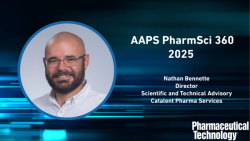
OR WAIT null SECS
- About Us
- Advertise
- Contact Us
- Editorial Info
- Editorial Advisory Board
- Do Not Sell My Personal Information
- Privacy Policy
- Terms and Conditions
© 2025 MJH Life Sciences™ , Pharmaceutical Technology - Pharma News and Development Insights. All rights reserved.
Q&A with Jim Vaughan of 3M Drug Delivery Systems
3M Drug Delivery Systems Division Vice President Jim Vaughan discusses facility locations and the drug-product inhalation market.
Jim Vaughan
PharmTech:Do you see a new industrytrend emerging?
Vaughan:New developments in theAsia–Pacific region havebeen interesting to follow. In2009, for the first time, mostof the world’s biosciencedegrees were awarded topeople outside the UnitedStates, and we are certainly seeing the changes that isbringing about. The explosion of startups, particularly inAsia, is one of the key factors in our expansion of laboratoryfacilities. Our new laboratory in Singapore supports earlystageproduct development and late-stage regulatory datademands, so we are able to serve new and establishedpharmaceutical companies in that region. We expect thislaboratory to become a major research hub, in addition toour research locations in the US and United Kingdom.An additional trend is the expansion of microneedletechnology, in which we are seeing increased interest.At 3M, we have long experience with this technologyand we feel well positioned, with our solid and hollow,microstructured transdermal systems, to meet the newdemands for these applications.
PharmTech:What is the most common demand your clients arecurrently making of you?
Vaughan:Our clients are looking for innovation in drug deliveryand new ways to administer their products. Our chieftechnologies are in the areas of inhalation and transdermaldelivery, so we are often called upon to adapt drugproducts to these methods. The capabilities of bothtechnologies are expanding, and the inhalation market isgrowing to include larger molecules than before, includingproteins and peptides. Inhalation is a promising deliveryroute for local and systemic drug delivery. The numberof transdermal therapies is growing steadily as well. Wehave created a method of solid microneedle delivery thatexpands the range of medications that can be deliveredtransdermally to patients, including vaccines, proteins, andpeptides. We also are working on a hollow, microstructuredtransdermal system that will further expand the range ofmedications for which transdermal systems can be used.
Related Content:



